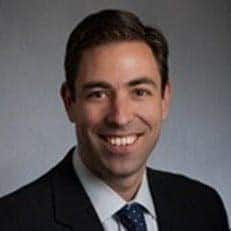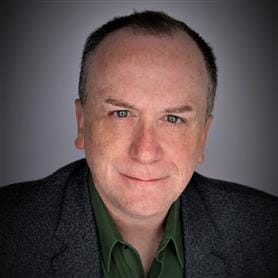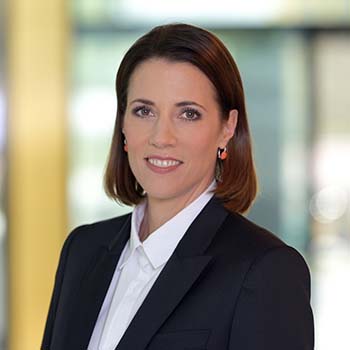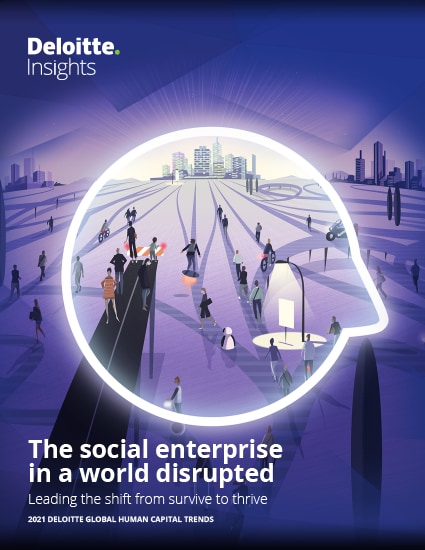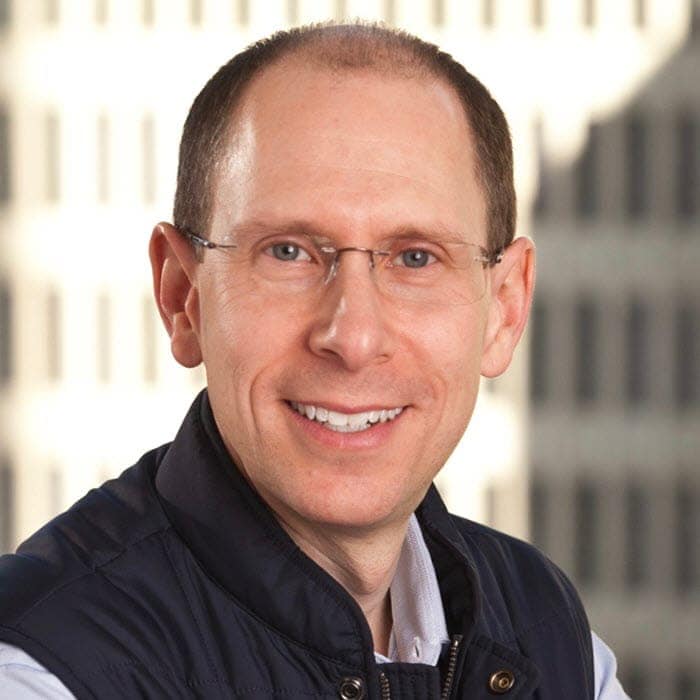
Leading forward Leading the shift from survive to thrive
Three powerful concepts--purpose, potential, and perspective--can point the way toward the future of human capital, empowering leaders to re-architect work in ways that lead to new outcomes and new value.
The past decade was marked by considerable economic and social disruption in the world of work. Organizations scrambled to stay in front of those disruptions, making point-in-time adjustments to their business models and processes to try to remain competitive in a quickly changing landscape. But when the events of 2020 created disruptions with orders of magnitude greater than what organizations were used to dealing with, it became unequivocally clear that point-in-time responses were not enough. As plans laid in 2019 were shattered, so too were organizational views of preparedness. Executives recognized that planning for expected and incremental events is not a solid foundation for thriving in multiple unknown futures, and they are shifting their approach to preparedness as a result (figure 1).
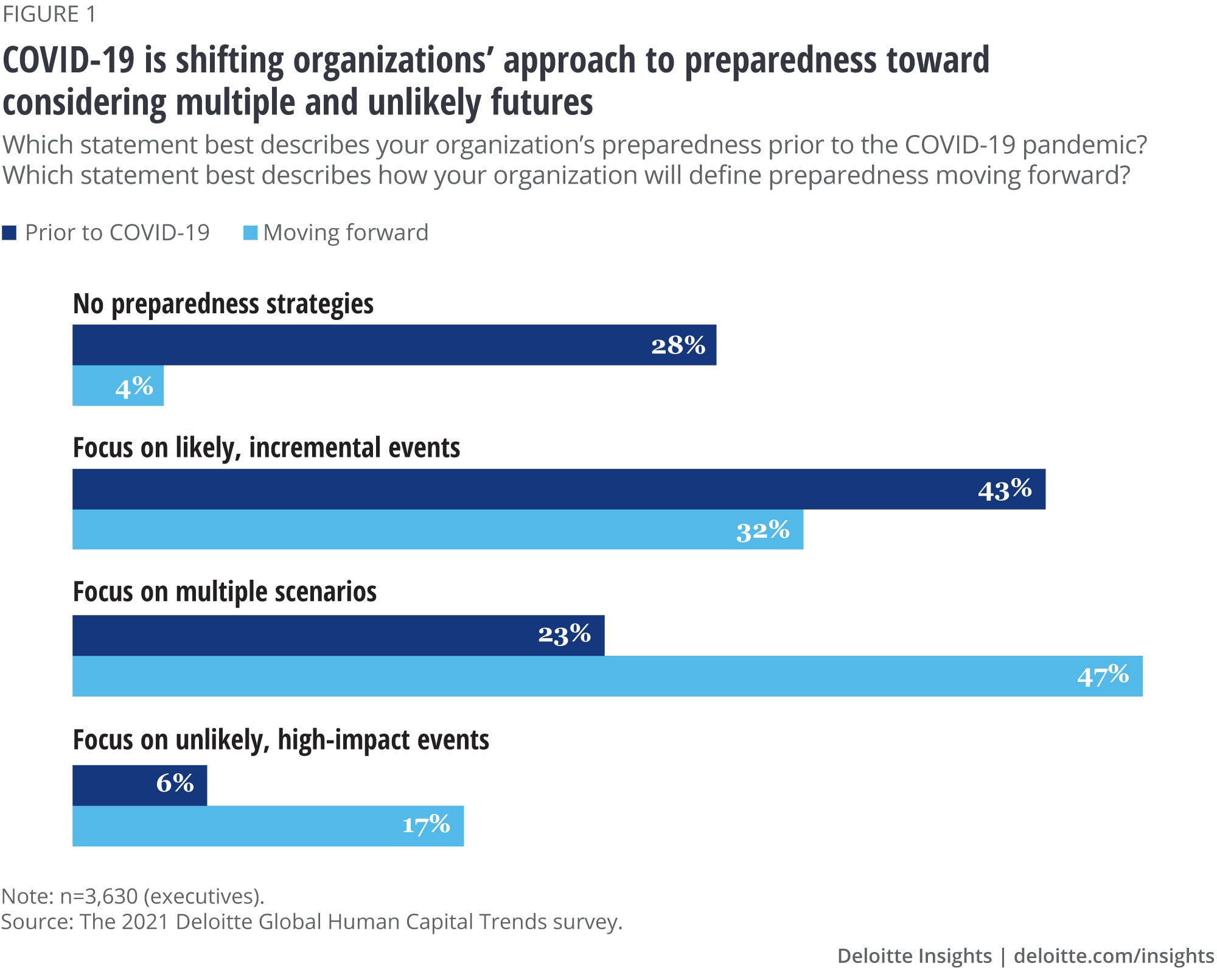
What also became clear is that preparedness for the unexpected depends crucially on an organization’s handling of work and the workforce. 2020’s global health, financial, and social equity crises may have had their most profound impacts on work and workers, with organizations making sweeping changes to what, where, how, and by whom work was done. The primacy of work and workers in the ability to navigate the year’s disruptions demonstrates that, when it comes to preparing for unknown futures, organizations have an imperative to structure work and support their workers in ways that enable them to rise to the challenges that disruption may bring.
Learn more
Explore the 2021 Human Capital Trends collection
Revisit the 2020 Human Capital Trends
Order a copy of Work Disrupted, Deloitte’s new book on the accelerated future of work
Explore five characteristics of a resilient organization
Explore The future of work in a post-pandemic world
Vist our Dbriefs webcast on-demand
Learn about Deloitte's services
Go straight to smart. Get the Deloitte Insights app
Create a custom PDF
As we’ve explored in our deep-dive discussions on well-being, reskilling, superteams, workforce strategies, and the role of HR, readying work and workers for uncertain futures depends on building the human element into everything an organization does. To do this, we believe that organizations must embrace three attributes—purpose, potential, and perspective—that allow them to humanize work to create lasting value for their workers, their organizations, and society at large.
Purpose grounds organizations in a set of values that do not depend on circumstance. Those values, which sit at the intersection of economic, social, and human interests, serve as a benchmark against which actions and decisions can be weighed. In the face of circumstances that are difficult to predict and plan for, organizations that are steadfast in their purpose are able to infuse meaning into work to mobilize workers around common, meaningful goals.
Potential encourages organizations to look more dynamically at what their people are capable of. When the task is to prepare for the familiar, organizations can rely on defined job descriptions, career paths, and learning programs to access and build workforce capabilities. But in a world where organizations must constantly prepare for the unknown, leaders must understand workers’ potential for growth and help them fulfill that potential in ways that allow them to both respond to and anticipate unplanned futures.
Perspective challenges organizations to operate boldly in the face of uncertainty. Rather than being paralyzed by a multitude of futures and options, organizations that employ perspective use disruption as a launching pad to imagine new opportunities and possibilities. We assert that the ability to take confident steps forward rests on the re-architecture of work. The re-architecture of work is reimagination put into practice; it is the act, the how, of deliberately designing work in ways that allow human capabilities to flourish in the search for new outcomes and new value.
The 2020 Deloitte Global Human Capital Trends report called on organizations to look at work and the workforce through these three lenses to transcend a perceived conflict between humans and technology. This year, having seen how organizations are making their way through the COVID-19 crisis, we suggest that these three attributes are essential for organizations to move more quickly from survive to thrive in a world of perpetual disruption.
Purpose in a world disrupted: Establishing a north star
2020 taught us the importance of purpose in establishing an organization’s direction in the face of disruption. We saw that organizations that embraced purpose were able to anchor their workers, teams, and leaders to a common understanding of what they were trying to accomplish. These organizations used purpose as a driving force to sift through competing priorities, unite workers under common goals, drive belonging, and focus energy and resources on their most pressing organizational and societal goals.
Ed Bastian, CEO of Delta Air Lines, credits Delta Air Lines' sense of purpose for helping the organization through the COVID-19 crisis. “When I took over as CEO, we studied what our mission was and what our purpose was, which has helped us postpandemic because we were clear prepandemic. Our people can do their very best when they have leadership support and feel connected to the organization’s purpose. Our mission is to connect people. No one better connects the world.”1
“Our people can do their very best when they have leadership support and feel connected to the organization’s purpose.”—Ed Bastian, CEO, Delta Air Lines
Purpose is inherently human because it relies on the uniquely human ability to identify where economic value and social values intersect. Understanding these intersection points can then allow leaders to identify a purpose consistent with both economic value and social values, and to use that purpose to guide their choices on an ongoing basis.
A powerful manifestation of purpose is bringing economic and social imperatives together to drive meaningful change inside an organization and in society. One example of such an organization is Edison International and its largest subsidiary, Southern California Edison (SCE), which decided to publish equal employment opportunity commission (EEOC)-type information on the company’s workforce and inclusion commitments to its employees, board members, and external stakeholder groups. As Natalie Schilling, SCE’s vice president of people, culture, and strategy, puts it: “We want to create more transparency for our employees and leaders about where we have opportunity [to further our commitments to make our organization more inclusive].”2 Liji Thomas, SCE’s head of diversity and inclusion, amplifies this view:
Part of being authentic on this journey is to go first and to lead from the front with transparency. In order to be successful and to shift an entire industry, or to create long-term sustainable change in the Fortune 250, we need to have other players at the table that share their data, particularly around pay equity.3
“We want to create more transparency for our employees and leaders about where we have opportunity [to further our commitments to make our organization more inclusive].”—Natalie Schilling, vice president of people, culture, and strategy, Southern California Edison
By being transparent about this DE&I-related information—and, by implication, its commitments and values around DE&I—SCE has given itself a platform to add its voice to public conversations on issues that matter to their organization and workforce. That platform allows them to encourage other organizations to create lasting change by following its lead, while also empowering SCE’s workers to raise conversations and topics that can drive real change within the organization.
“Part of being authentic on this journey is to go first and to lead from the front with transparency.”—Liji Thomas, head of diversity and inclusion, Southern California Edison
Potential in a world disrupted: Capitalizing on human capabilities
To thrive amid constant disruption, organizations need to capitalize on the potential of their workers and their teams. Organizations that understand and activate workforce potential will be better able to capitalize on human ingenuity and achieve organizational speed and agility. Our survey results show that most leaders agree: Seventy-two percent of the executives in the 2021 Deloitte Global Human Capital Trends survey told us that “the ability of their people to adapt, reskill, and assume new roles” was either the most important or second most important factor in their organization’s ability to navigate future disruptions. However, only 17% of these same executives said that their organization was “very ready” to adapt and reskill workers to assume new roles, pointing to a substantial disconnect between leaders’ priorities and the reality of how their organizations support workforce development.
This disconnect may exist because many organizations still take a limited view of their workforce. Many tend to think of workers in terms of static role descriptions rather than considering workers as individuals with different backgrounds, experiences, and interests who are capable of continuous growth. Because of this, organizations miss the opportunity to foster their workers’ potential and to harness their passions in the pursuit of organizational goals.
AstraZeneca is an example of an organization that capitalized on worker potential to quickly mobilize its resources to meet a pressing need—in this case, to develop a COVID-19 vaccine. Tonya Villafana, AstraZeneca’s vice president and global franchise head of infection, credits the company’s accelerated response to its ability to tap into a varied pool of experts, both across the company and through its collaboration with the University of Oxford. But more than this, AstraZeneca not only involved top experts but also added “high performers who were really passionate and wanted to get involved” with the vaccine development team.
They were the right people at the right time to put into that role. Not everyone has to be an infectious disease expert. It was more about having that kind of passion to deliver and the energy to want to do it.4
AstraZeneca also tapped into the potential of its ecosystem. United by a common purpose, the company collaborated with academia and regulatory agencies and employed new ways of working that allowed them to begin vaccine trials in record time, doing in weeks and months what might have taken months or years in the past. They hope the success of those collaborations will lead to meaningful change moving forward. According to Villafana:
I think it has fundamentally changed the industry in terms of how we will work going forward with each other. I hope we’ve learned as a human race that we should do this better.
“[We added] high performers who were really passionate and wanted to get involved [with our vaccine development team] ... Not everyone has to be an infectious disease expert. It was more about having that kind of passion to deliver and the energy to want to do it.”—Tonya Villafana, vice president and global franchise head of infection, AstraZeneca
ServiceNow, a digital workflow company, also recognized the value of leaning into workers’ potential for growth and high performance during the crisis. “We delivered two major, high quality product releases on-time, and the amount of code we wrote during the pandemic actually went up,” ServiceNow CEO Bill McDermott says. “There’s no question that this brought a lot of awareness to the management team about human capacity and how great work can happen from anywhere, if you enable it.” He stresses the importance of trusting workers to bring creativity and initiative to the job. “Talent will work where they are trusted and respected, and their productivity, individuality, and creativity get unleashed in new and unusual ways—unusual because people want to do things that have never been done before, not do things because that’s the way they’ve always done it.”
Perspective in a world disrupted: Re-architecting work to take bold steps forward
To act on the perspective that uncertainty is an opportunity to create one’s own future, organizations need to be poised to take bold steps forward even if they go in a different direction from what was usual and comfortable before.
ServiceNow is one organization that shifted direction in this way during COVID-19. In March 2020, the company held a “blue sky” strategy session as a forum for leaders to discuss the future of work, the future of digital transformation, and the future of the company. But as they considered these issues under the cloud of the emerging pandemic, CEO Bill McDermott realized, “If we can’t help the world manage the pandemic, there won’t be a blue sky.” He pivoted the meeting to focus instead on how ServiceNow could quickly innovate and bring new products to market that would help organizations maintain business operations during the pandemic. As part of this effort, ServiceNow quickly built and deployed four emergency response management applications as well as a suite of safe workplace applications to make returning to the workplace work for everyone.
Our view is that being prepared to take bold steps forward in uncertainty depends on a deliberate effort to re-architect work, putting work reimagination into action by constantly examining work to find ways to open new pathways to an organization’s goals. We saw the power of work re-architecture during the COVID-19 crisis when organizations had to rethink fundamental assumptions about what work is and how it could be done. The ability to re-architect work according to a different set of assumptions and put those changes into practice proved essential to organizations’ survival, and it can also enable them to thrive long after the pandemic recedes.
Perhaps for this reason, most executives in our survey are now prioritizing how they look at work. Sixty-one percent told us that their work transformation objectives going forward would focus on reimagining work, compared to only 29% who were thinking that way before the pandemic (figure 2).
Work transformation definitions
- Optimizing work: Doing the same work more efficiently
- Redesigning work: Achieving the same work outputs with new combinations of technology and people
- Reimagining work: Achieving new or different work outcomes with new combinations of technology and people

Re-architecting work means more than automating tasks and activities. It’s about configuring work to capitalize on what humans can accomplish when work is designed around their strengths. This may be why executives in our survey identified the two factors most related to human potential as the most important to transforming work (figure 3). While technology is important, this is not a challenge for technology alone, but for humans and technology together.

To bring out human potential, leadership is critical. Indeed, leadership was the top factor our survey identified as a driver of change. Sixty percent of executive respondents said that leadership behavior was critical to achieving their future vision of preparedness; they also identified several leadership issues—prioritization; skills, experience, and culture; and visioning—as the three biggest barriers to work transformation.
Delta Air Lines CEO Bastian stresses the need for strong leadership during a crisis. The business experienced a dramatic swing in circumstance, from record-high revenue and performance in February 2020 to only about 3% of that revenue base a mere 30 days later.5 “In our 95-year history, our company has never needed its leadership more than it needs it now,” Bastian reflected. But he also gives Delta Air Lines' workers credit for helping the company weather the crisis. “We’ve had a lot of great leaders who built this company, but it’s the people who are in the chairs today who are more important than at any time in our history. It can be hard, and the stress and the challenges are amazing, but [it is an] honor and a privilege to be serving in a time like this.”6
ServiceNow’s McDermott has also risen to the call for strong leadership. “I’m leaning in with everything I’ve got to reform, reshape, and reimagine the future without any interest in harvesting the past, because I truly believe we will never go back to the way things were before the pandemic,” McDermott says. The future, he believes, is one where humans take center stage in enabling an organization’s success. “We’re in a world now that’s all about people. We’re in a truly human moment where any connection that doesn’t absolutely lean into people will go nowhere.”
“We’re in a world now that’s all about people. We’re in a truly human moment where any connection that doesn’t absolutely lean into people will go nowhere.... ”—Bill McDermott, CEO, ServiceNow
A call to action
If the past year has shown us anything, it’s that putting people at the heart of an organization’s decisions about work and the workforce pays off in the ability to better stay ahead of disruption. Putting that ability into practice entails thinking about work and the workforce in terms of purpose, potential, and perspective to build an organization that can thrive in an unpredictable environment with an unknown future. Leaders should find ways to create a shared sense of purpose that mobilizes people to pull strongly in the same direction as they face the organization’s current and future challenges. They should trust people to work in ways that allow them to fulfill their potential, offering workers a degree of choice over the work they do to align their passions with organizational needs. And they should embrace the perspective that reimagining work is key to the ability to achieve new and better outcomes in a world that is itself being constantly reimagined.
ServiceNow’s McDermott may have said it best: “Leaders of consequence understand that what must be done eventually should be done immediately.” Now may be a unique moment in history that gives leaders the impetus to move into a significantly higher level of action and vision. It is up to them—to us—to seize that moment, making meaningful changes in how we approach work and the workforce that position our organizations to thrive.
© 2021. See Terms of Use for more information.
Explore the collection
-
Global Human Capital Trends 2021: The social enterprise in a world disrupted Article4 years ago
-
Diving deeper Article4 years ago
-
The alternative workforce Article6 years ago
-
From employee experience to human experience Article6 years ago
-
The postgenerational workforce Article4 years ago
-
Ethics and the future of work Article4 years ago

